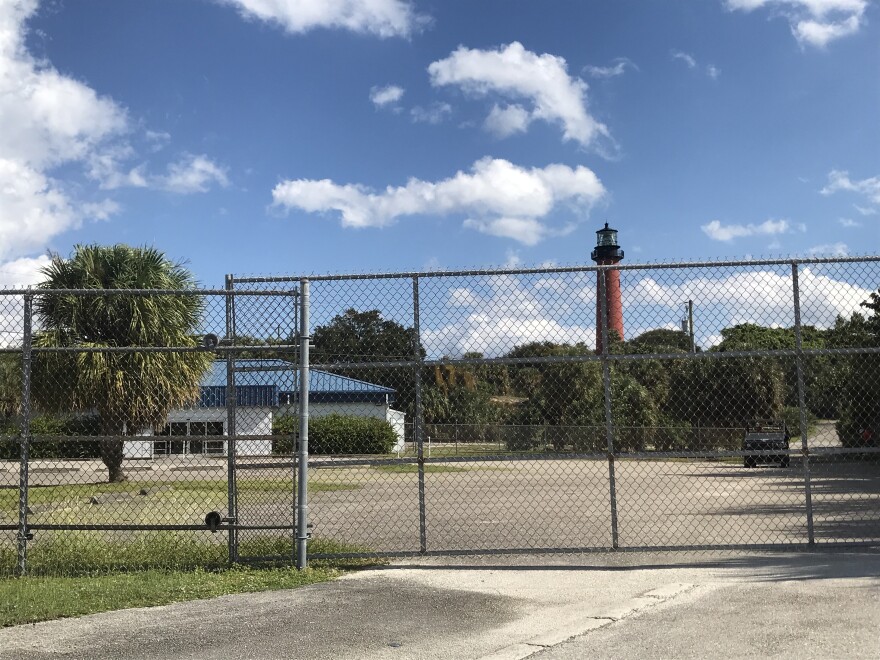It was a beautiful Tuesday morning at the Jupiter Inlet Lighthouse. The sun was sparkling off the clear blue water, a light breeze was stirring through the native trees and plants, and – notably – children in matching polos were bouncing up and down with excitement about climbing the historic red tower.
“Look at all of them in their little red shirts,” said Jamie Stuve, who oversees the lighthouse area’s historical functions as the president and CEO of the Loxahatchee River Historical Society. “They love it, that makes me so happy.”
Tuesday marked the reopening of the lighthouse, after maintenance and painting shut it down for about a month. Stuve said the historical society usually tries to keep the climbing tours open and the lighthouse operational throughout repairs, but sometimes the 160-year-old building needs more work than they can do quickly or safely while also serving a steady stream of tourists.
Though the rest of the lighthouse grounds, including the museum and historic George Washington Tindall House, were open, Stuve said they didn’t see many visitors. But on its first morning back up and running, the site was flooded with school groups – mostly fourth-graders who are working through a unit on Florida history.
Even as the repairs breathe new life into the site, the lighthouse is marking the end of another era. On Veterans Day, the U.S. Coast Guard formally transferred management of the lighthouse grounds to the Bureau of Land Management, a non-military federal agency that oversees public lands.
The Coast Guard assumed responsibility for the Jupiter Inlet Lighthouse site in 1939, and other military branches – notably the Navy, which intercepted German U-Boat signals from a station on the site during World War II – have maintained a presence on the lighthouse grounds at various points in its 160-year history.

With its transfer to the BLM, and its ongoing lease to the historical society, the Coast Guard is becoming the latest military branch to leave the site. The Loxahatchee River Historical Society cares for the lighthouse under a 30-year lease from the Coast Guard that began in 2006. As part of its departure, the Coast Guard just added supervision of the PX, or military exchange store, to the historical society’s lease.
With the Coast Guard’s departure, the BLM is working to plot out a future for the military branch’s old buildings. It solicited public input in October and at a public meeting in May. Ideas include taking down some of the buildings to open up more land for native species to flourish.
Stuve and the historical society, meanwhile, are working on their own plans for the future. As part of the act of Congress that brought the BLM to the lighthouse and established the land around it as an Outstanding Natural Area under federal protection, the historical society reserved the right to construct replicas of historic buildings – and they have plans to restore existing buildings used by the lighthouse keepers of old, as well.
One old building near the lighthouse will be retrofitted to add much-needed public bathrooms to the site. Stuve said the BLM is chipping in $1 million to bring in a new sewer system. Beside that building is the old three-bay garage that housed the lighthouse keepers’ cars, which Stuve said they’re planning to restore with historical details and use for staff vehicles today.
Behind that is a restoration project Stuve is particularly excited about – an old radio beacon building that operated from the late 1920s until after World War II. The historical society is planning restore the building by the end of next year, including a generator and radio beacon machinery that mimics what was used when it was operational.
“It’s a big part of our history, that we flashed a lot of different ways,” she said. “Whether it was Morse code or radio beacon or the lighthouse, we were trying to let everyone know where they were and help them orient themselves.”





